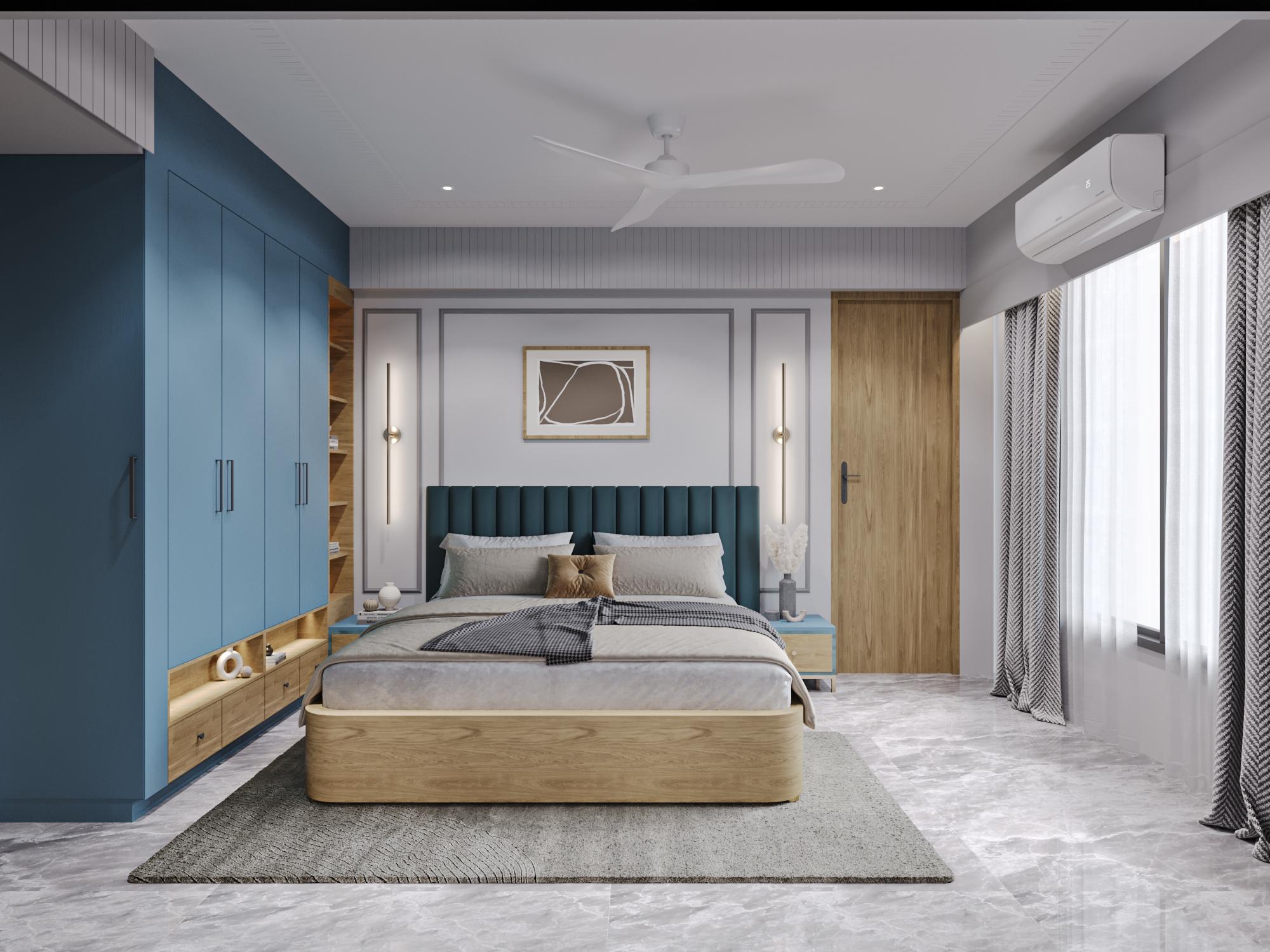What is 3D Furniture Rendering & Why It Matters for Furniture Brands
In today’s digital world, visuals speak louder than words. The furniture industry, once dependent on traditional photography and catalog design, has now shifted to a faster, smarter, and more cost-effective technology — 3D furniture rendering. This innovation allows brands to showcase furniture designs with unmatched realism, flexibility, and speed, long before a single piece is manufactured.
What is 3D Furniture Rendering?
3D furniture rendering is the process of creating photorealistic digital images of furniture models using specialized 3D software. These renders replicate every texture, finish, and lighting effect, making digital images look exactly like real-life furniture photos.
Instead of setting up an expensive photoshoot, designers and marketers can use 3D renders to visualize products in multiple colors, materials, and room settings — all virtually.
How Does 3D Furniture Rendering Work?
The process usually involves four main stages:
Modeling – A 3D artist creates a digital version of the furniture based on drawings, CAD files, or sketches.
Texturing – Materials like wood, metal, leather, or fabric are added to match real-world finishes.
Lighting – The artist simulates realistic lighting conditions, including shadows, reflections, and depth.
Rendering – The final step where software processes the scene into a high-resolution, lifelike image.
The result? A perfect visual representation of furniture that looks ready to use in any room setting.
Why 3D Furniture Rendering Is a Game Changer
1. Cost-Effective Marketing
Traditional product photoshoots require logistics, setups, and multiple samples. With 3D rendering, you can produce hundreds of images with different angles and finishes — without building a single prototype.
2. Faster Time-to-Market
Brands can launch their furniture collections online before production starts. This accelerates sales cycles and allows for quicker feedback from customers or retailers.
3. Customization and Variations
With 3D rendering, changing colors, upholstery, or designs takes only a few clicks. You can present every variation of your product — something impossible with regular photography.
4. Better Customer Experience
High-quality renders help customers visualize furniture in different environments, making purchasing decisions easier. Adding 360° views or AR (augmented reality) features further enhances engagement.
5. Environmentally Friendly
Reducing physical prototypes saves materials and waste, making 3D rendering an eco-conscious marketing solution.
Where Furniture Brands Use 3D Rendering
E-commerce listings: Create consistent, high-quality visuals for online stores.
Social media marketing: Use photorealistic renders for promotional campaigns.
Catalogs & brochures: Replace traditional photos with 3D images for easy updates.
Client presentations: Impress customers with 3D models and walkthroughs.
Virtual showrooms: Offer immersive experiences using 360° or VR renders.
Future of 3D Furniture Visualization
With the rise of AI-assisted rendering and real-time visualization tools, 3D rendering is only getting faster and more powerful. Brands are now using it for interactive AR shopping experiences — where customers can place virtual furniture in their own homes using smartphones.
The next era will combine AI, VR, and 3D rendering to create fully immersive digital furniture showrooms that redefine online retail.
Conclusion
3D furniture rendering isn’t just a creative tool — it’s a strategic investment for modern furniture businesses. It reduces costs, speeds up marketing, enhances customer engagement, and showcases designs in stunning realism.
If you’re a furniture manufacturer, designer, or retailer looking to stand out in today’s competitive digital market, 3Dfurniturerendering.com can help you bring your ideas to life with precision, style, and photorealism.
#3DModeling
#3DproductRendering
In today’s digital world, visuals speak louder than words. The furniture industry, once dependent on traditional photography and catalog design, has now shifted to a faster, smarter, and more cost-effective technology — 3D furniture rendering. This innovation allows brands to showcase furniture designs with unmatched realism, flexibility, and speed, long before a single piece is manufactured.
What is 3D Furniture Rendering?
3D furniture rendering is the process of creating photorealistic digital images of furniture models using specialized 3D software. These renders replicate every texture, finish, and lighting effect, making digital images look exactly like real-life furniture photos.
Instead of setting up an expensive photoshoot, designers and marketers can use 3D renders to visualize products in multiple colors, materials, and room settings — all virtually.
How Does 3D Furniture Rendering Work?
The process usually involves four main stages:
Modeling – A 3D artist creates a digital version of the furniture based on drawings, CAD files, or sketches.
Texturing – Materials like wood, metal, leather, or fabric are added to match real-world finishes.
Lighting – The artist simulates realistic lighting conditions, including shadows, reflections, and depth.
Rendering – The final step where software processes the scene into a high-resolution, lifelike image.
The result? A perfect visual representation of furniture that looks ready to use in any room setting.
Why 3D Furniture Rendering Is a Game Changer
1. Cost-Effective Marketing
Traditional product photoshoots require logistics, setups, and multiple samples. With 3D rendering, you can produce hundreds of images with different angles and finishes — without building a single prototype.
2. Faster Time-to-Market
Brands can launch their furniture collections online before production starts. This accelerates sales cycles and allows for quicker feedback from customers or retailers.
3. Customization and Variations
With 3D rendering, changing colors, upholstery, or designs takes only a few clicks. You can present every variation of your product — something impossible with regular photography.
4. Better Customer Experience
High-quality renders help customers visualize furniture in different environments, making purchasing decisions easier. Adding 360° views or AR (augmented reality) features further enhances engagement.
5. Environmentally Friendly
Reducing physical prototypes saves materials and waste, making 3D rendering an eco-conscious marketing solution.
Where Furniture Brands Use 3D Rendering
E-commerce listings: Create consistent, high-quality visuals for online stores.
Social media marketing: Use photorealistic renders for promotional campaigns.
Catalogs & brochures: Replace traditional photos with 3D images for easy updates.
Client presentations: Impress customers with 3D models and walkthroughs.
Virtual showrooms: Offer immersive experiences using 360° or VR renders.
Future of 3D Furniture Visualization
With the rise of AI-assisted rendering and real-time visualization tools, 3D rendering is only getting faster and more powerful. Brands are now using it for interactive AR shopping experiences — where customers can place virtual furniture in their own homes using smartphones.
The next era will combine AI, VR, and 3D rendering to create fully immersive digital furniture showrooms that redefine online retail.
Conclusion
3D furniture rendering isn’t just a creative tool — it’s a strategic investment for modern furniture businesses. It reduces costs, speeds up marketing, enhances customer engagement, and showcases designs in stunning realism.
If you’re a furniture manufacturer, designer, or retailer looking to stand out in today’s competitive digital market, 3Dfurniturerendering.com can help you bring your ideas to life with precision, style, and photorealism.
#3DModeling
#3DproductRendering
What is 3D Furniture Rendering & Why It Matters for Furniture Brands
In today’s digital world, visuals speak louder than words. The furniture industry, once dependent on traditional photography and catalog design, has now shifted to a faster, smarter, and more cost-effective technology — 3D furniture rendering. This innovation allows brands to showcase furniture designs with unmatched realism, flexibility, and speed, long before a single piece is manufactured.
What is 3D Furniture Rendering?
3D furniture rendering is the process of creating photorealistic digital images of furniture models using specialized 3D software. These renders replicate every texture, finish, and lighting effect, making digital images look exactly like real-life furniture photos.
Instead of setting up an expensive photoshoot, designers and marketers can use 3D renders to visualize products in multiple colors, materials, and room settings — all virtually.
How Does 3D Furniture Rendering Work?
The process usually involves four main stages:
Modeling – A 3D artist creates a digital version of the furniture based on drawings, CAD files, or sketches.
Texturing – Materials like wood, metal, leather, or fabric are added to match real-world finishes.
Lighting – The artist simulates realistic lighting conditions, including shadows, reflections, and depth.
Rendering – The final step where software processes the scene into a high-resolution, lifelike image.
The result? A perfect visual representation of furniture that looks ready to use in any room setting.
Why 3D Furniture Rendering Is a Game Changer
1. Cost-Effective Marketing
Traditional product photoshoots require logistics, setups, and multiple samples. With 3D rendering, you can produce hundreds of images with different angles and finishes — without building a single prototype.
2. Faster Time-to-Market
Brands can launch their furniture collections online before production starts. This accelerates sales cycles and allows for quicker feedback from customers or retailers.
3. Customization and Variations
With 3D rendering, changing colors, upholstery, or designs takes only a few clicks. You can present every variation of your product — something impossible with regular photography.
4. Better Customer Experience
High-quality renders help customers visualize furniture in different environments, making purchasing decisions easier. Adding 360° views or AR (augmented reality) features further enhances engagement.
5. Environmentally Friendly
Reducing physical prototypes saves materials and waste, making 3D rendering an eco-conscious marketing solution.
Where Furniture Brands Use 3D Rendering
E-commerce listings: Create consistent, high-quality visuals for online stores.
Social media marketing: Use photorealistic renders for promotional campaigns.
Catalogs & brochures: Replace traditional photos with 3D images for easy updates.
Client presentations: Impress customers with 3D models and walkthroughs.
Virtual showrooms: Offer immersive experiences using 360° or VR renders.
Future of 3D Furniture Visualization
With the rise of AI-assisted rendering and real-time visualization tools, 3D rendering is only getting faster and more powerful. Brands are now using it for interactive AR shopping experiences — where customers can place virtual furniture in their own homes using smartphones.
The next era will combine AI, VR, and 3D rendering to create fully immersive digital furniture showrooms that redefine online retail.
Conclusion
3D furniture rendering isn’t just a creative tool — it’s a strategic investment for modern furniture businesses. It reduces costs, speeds up marketing, enhances customer engagement, and showcases designs in stunning realism.
If you’re a furniture manufacturer, designer, or retailer looking to stand out in today’s competitive digital market, 3Dfurniturerendering.com can help you bring your ideas to life with precision, style, and photorealism.
#3DModeling
#3DproductRendering
0 Commentarios
0 Acciones
317 Views
0 Vista previa







